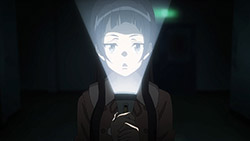 |
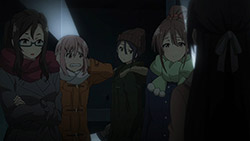 |
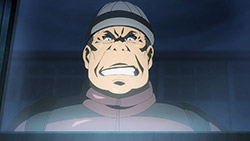 |
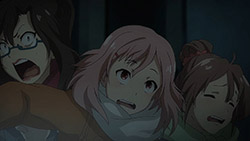 |
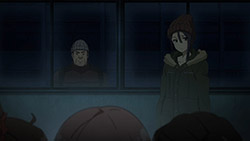 |
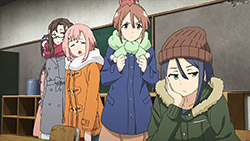 |
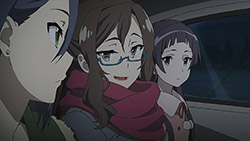 |
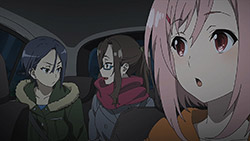 |
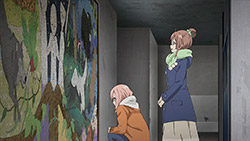 |
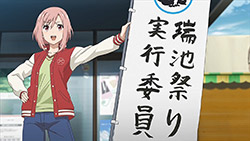 |
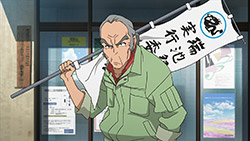 |
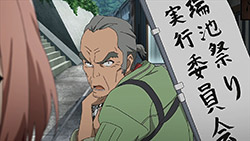 |
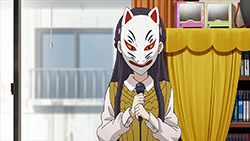 |
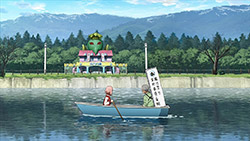 |
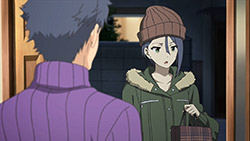 |
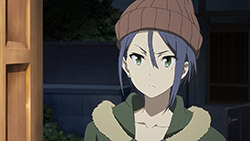 |
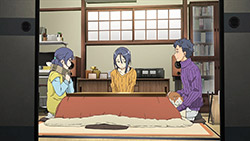 |
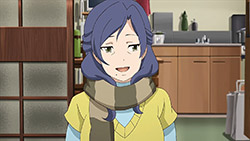 |
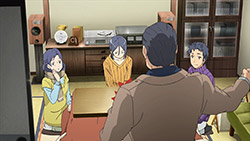 |
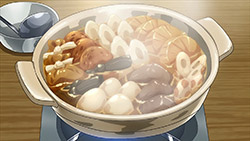 |
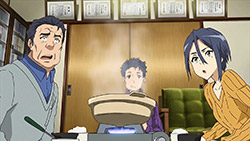 |
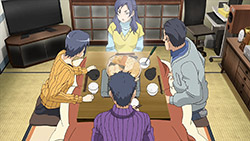 |
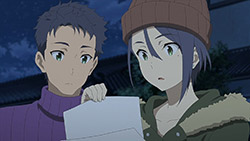 |
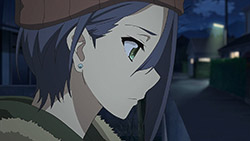 |
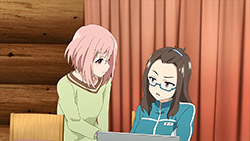 |
 |
 |
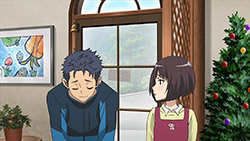 |
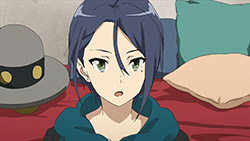 |
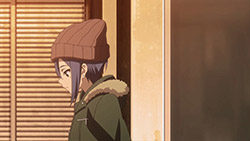 |
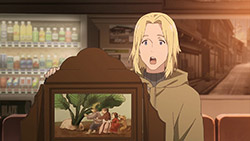 |
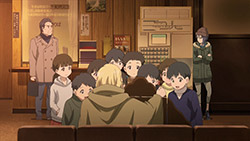 |
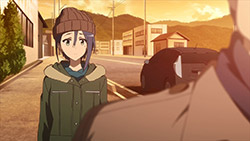 |
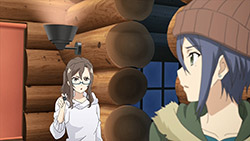 |
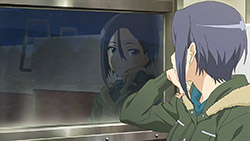 |
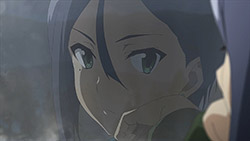 |
「霧のフォークロア」 (Kiri no Foukuroa)
“The Foggy Folklore”
This week’s Sakura Quest was all too relatable. Other than the movie audition, it’s easy to empathize with Maki as she struggles with the pressure her family pushes on her to make a decision on what she wants to be. The tourism agency’s involvement in the condemned school where ghost Santa resides and her mother’s birthday ended up putting her in a vulnerable position where she’d have to confront her father eventually on why she quit acting and wanted to return to Manoyama. While the situation got tense at the dinner table when she was invited inside to eat birthday oden with her family, she had a better opportunity to talk with her dad more calmly later on.
It creates a complex situation because her dad revealed that he’s only critical because he felt she gave up on her dream, but at the same time, was hard on her for leaving the family to go acting in Tokyo. Similarly, her dad is telling her all of this right after she experienced years of rejection with only a bit part on The Oden Detective and odd jobs to get by. I can understand why Maki is frustrated at the interactions she does have with her dad, and why she doesn’t have an amicable relationship with her family when they only speak to her as if she gave up for no good reason.
Nonetheless, I am curious on what will happen to Maki from here since she has a very good opportunity on her shoulders to get back into acting after her application to audition for a famous director’s new film got accepted. Personally, I hope that it works out well for Maki because her disillusion from acting came from the difficulty of finding good work, and now that she has a chance to be in a great role, it’d be the comeback that she’d need to revisit the passion she had towards acting with more lucrative roles in the future.
Along with Maki’s background in acting, I want to take the time to mention how much I love the cinematic qualities of the anime. There were multiple scenes throughout the show already that were composed excellently, as if the animators were working with a dynamic camera. Not just the long shots that display the scenery and landscapes of Manoyama like where Yoshino and Kadota reflect on building Chupakabura in a desperate bid to revive the town during a boat ride, but within dramatic scenes as well such as the scene in the last episode where Yoshino gets the news of the professor’s passing through a silent phone call. The perspective was shot at an angle that obscured the top half of her face and expressed her horrified reaction through her posture.
One technique I have noticed they use is composing a shot to create a juxtapositon between two characters, or a character and their surroundings. I remember it in one episode in the past, but this one had a great shot where Maki and her father are at the train station. A kiosk of the train route and Sandal’s play act as blocks to form a wedge between Maki and her father as they look at each other from the side. The town’s festivities and the distance between Manoyama and Tokyo are figuratively and literally separating the two from seeing eye-to-eye. There was also a nice moment where Maki was reflecting on the internal battle she’s having on whether she’d be content continuing to ignore the audition or if she’d only be complacent in running from another chance. The “camera” slowly follows Maki around town as they play soft music to help the audience understand that she’s reflecting on whether she’s making the right decision by focusing all of her energy on the towns development.
If you wanted to create an analysis for a film paper, Sakura Quest has many scenes/shots to choose from, but as someone who’s studied film, I’m loving how the animators treat each scene like it’s trying to tell a story from its shots or movement like a more finessed film would. It’s rare to see an anime treat its animation like it’s a real life “camera” and use shots as more than just a means of following the characters. That’s not to say it’s never been done before, but I respect Sakura Quest even more for being able to convey the characters’ feelings, actions, and motivations through their relationship with their surroundings.
Much like Sanae’s dilemma with the professor, Maki facing her father and her acting dreams might be what the tourism agency would need to gather the second relic that resides in an old, condemned school that will eventually be torn down. I’m wondering what will happen there because the show is adding more goals on the girls’ checklist that it’ll be hard to revive the festival, prevent the school from being torn down, and revitalize parts of the town that will eventually be empty spaces among the surviving businesses and houses of Manoyama.
Preview
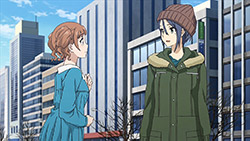 |
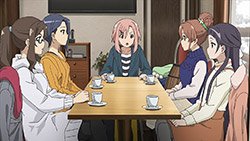 |
 |

I was also thinking that this show was just like a live action drama during this episode. You know it probably helps how their outfits change every day and even the fact that their winter outfits are so varied. In most anime they always where the same outfit. That has been changing recently though.
I’ve gotten many live action TV drama vibes from Sakura Quest as I’ve been watching it. When I bring it up to people I know to convince them to watch it some time, I pitch it like as an animated J-drama. There’s a K-drama like this with young adult women living together called Hello, My Twenties (that’s the Netflix name though, because it comes up on Google as Age of Youth).
I can’t this episode has only one comment.. >_< I wouldn't say this episode had a big impact like some other good episodes but still, I totally agree with sealouse and Choya about how this show has a live action drama vibe. The story itself too is pretty close to realistic.